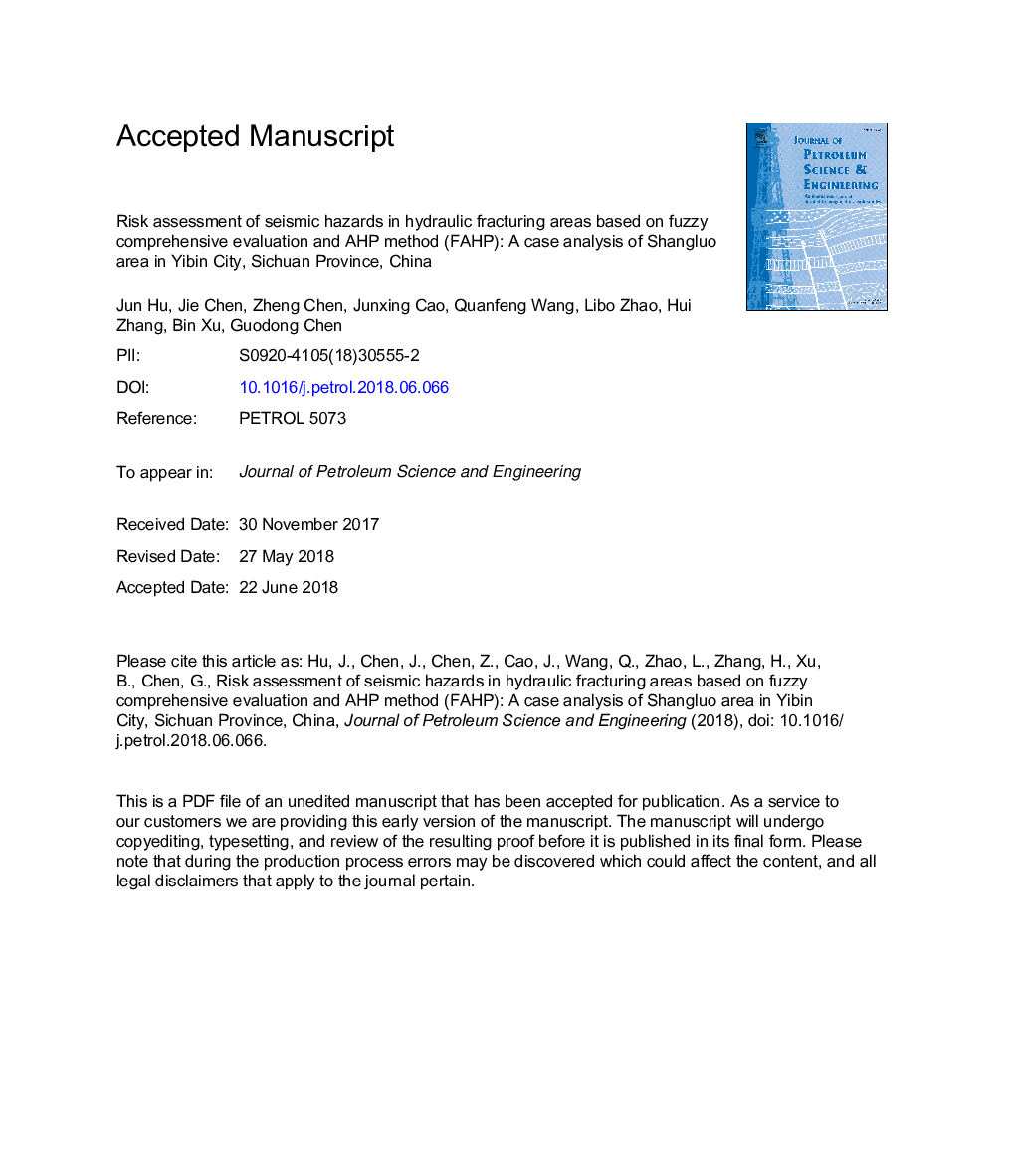| Article ID | Journal | Published Year | Pages | File Type |
|---|---|---|---|---|
| 8124512 | Journal of Petroleum Science and Engineering | 2018 | 30 Pages |
Abstract
In this paper, a fuzzy comprehensive evaluation (FCE) based on the analytic hierarchy process (AHP) model (FAHP) has been established to quantitatively evaluate the seismic risk of the region with covers 3080.25â¯km2 including hydraulic fracturing operation areas. Taking into account the combined effect exerted by influencing factors such as geological structures, the seismic history and the stress accumulation, etc., six major factors are identified, namely, seismicity rates (Z value), magnitude-frequency coefficients (b value), salt mines, reservoirs, regional geotectonic (distribution of active faults), stress fields and the spatial distribution of fracturing platforms. In addition to using massive raw data as objective information, this model takes experts' assessments as the subjective judgment of expertise. According to the maximum membership principle, the most favorable risk evaluation have been made in 625 grids with optimized results through methods of the weighted average and the interpolation. Comprehensive evaluation maps have been drawn based on the seismic data from 2008 to 2016 used in modeling and have been validated by the seismic data in 2017. Results show that most of the seismic events in 2017 have fit into the high-risk area, especially those felt earthquakes larger than magnitude 3 have entirely fit into the medium-high risk area after the interpolation, indicating that the assessment results have certain objectivity and accuracy.
Related Topics
Physical Sciences and Engineering
Earth and Planetary Sciences
Economic Geology
Authors
Jun Hu, Jie Chen, Zheng Chen, Junxing Cao, Quanfeng Wang, Libo Zhao, Hui Zhang, Bin Xu, Guodong Chen,
